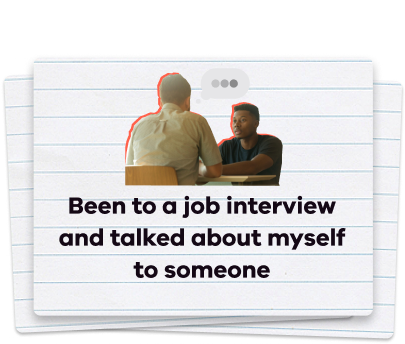Applying for a job can feel daunting, especially if you’re still in school or have never worked before.
Whether you’re looking to start your career or just want to bring in some extra money, there are plenty of job options available.
Before you start to look around for work, think about the type of work you’re looking for.
Types of work
Apprenticeships and traineeships
Apprenticeships and traineeships are a great way to learn on the job, get paid at the same time and develop a lifelong skill. You can do this as part of your high school, university or TAFE studies or wait until you’ve left school.
Example apprenticeship and traineeship jobs include:
- carpenter
- plumber
- electrician
- hairdresser
- cook or chef
- mechanic.
Part-time or full-time work
If you’re still in high school or studying at university, you might want to look for part-time work. Part-time workers are employed for less than the standard working week of 38 hours.
Full-time workers are employed for at least 38 hours a week. You might look for full-time work if you’ve recently finished studying, have recently arrived in Australia, or are looking to start your career.
As you start to think about entering into the workforce, it’s important that you know your rights as a part-time or full-time worker.
Casual work
Casual work is a great first job option for young people. It allows you to get work experience while studying or if you’ve just left school.
Casual workers do not have guaranteed hours of work. This means your hours can change from week to week. There might be weeks where you do not get any work at all. This flexibility might suit you, especially if you’re studying and are busy with other activities.
Examples of where casual work can be found include:
- cafes and restaurants
- retail shops
- food and drink outlets (fast food, juice bars, ice-cream shops).
Another common example of casual work is a summer job, where an employer hires more employees during their busy season. Casual jobs can be a good way for you to earn some money over your summer break.
If you decide you want to take on casual work just remember that casual workers have rights, too.
Short-term (temp) jobs
Short-term jobs, sometimes called contract jobs, temporary jobs or temp jobs, have a fixed end date. You might be employed full-time, part-time or as a casual but your job finishes when the end date comes.
Short-term jobs can be a good way to try out a new field or gain experience.
A lot of short-term work can be found through employment agencies.
Gig (on-demand) jobs
Gig jobs are where you work for a company providing services like ridesharing or food delivery. This kind of work is flexible and can fit around study or other commitments.
If you’re interested in taking on some gig work, the Victorian Government has information about how it can support you as a gig worker and help you know your rights.
Graduate recruitment programs
Graduate recruitment programs are for people who’ve recently graduated from university. They usually involve one or two years of full-time employment with a larger organisation.
Applying for a job without work experience
Once you’ve decided what type of work you’re looking for (and have found a job you’re interested in) the next step is to fill out an application.
Many employers will want you to talk about your previous experience when applying for work. But there are many employers who hire young people knowing that this is their first job. For example, when applying for casual work in a fast-food restaurant or for an apprenticeship role.
There are ways you can show the type of experience employees are looking for even before you’ve had your first job.
Here are some ideas:
Get involved with your community
Helping out in your community can show employers you’ve developed valuable skills such as teamwork, commitment and responsibility.
If you notice an interesting event, group or project happening near you, find out the contact details of the person organising it.
Get in touch with them, and ask if you can help. They’ll be pleased to hear from you!
There are loads of things you could get involved with:
- local sporting teams or even coaching a younger team
- conservation groups
- local politics
- community gardens
- volunteer organisations
- community radio stations
- community events like a local arts or sports festival
- sausage sizzle fundraisers
- activities at your place of worship.
As well as building your teamwork and communication skills and learning from role models, getting involved with the community is a great way to expand your network.
The bigger your network, the more chances you have to find out about work opportunities.
Take a look at your school projects
If you're a high school, TAFE or university student, you’ve already done group projects that involve:
- being organised
- using teamwork
- managing time
- research skills
- communication and presentation skills.
Go through past projects and highlight your experience on your resume.
Volunteer for community and not-for-profit organisations
Volunteering helps you show potential employers your teamwork, communication and organisational skills. It’s also a great way to meet potential referees.
Choose an organisation you believe in and volunteer for an activity you know you’re going to enjoy.
Find out more on our how to find volunteer work page.
Apply for work experience or placements
Most schools, universities and TAFEs offer work experience or industry placement programs.
You get to spend time in a real workplace (doing unpaid work) and learn the skills needed to do that type of job.
Find out how to find work experience, or take a look at our industry based learning page.
We’ve also got information about internships, graduate recruitment programs and student work placements.
Applying for your first job
Sometimes you’ll apply for a job with your resume and a covering letter but most organisations just need you to complete an online form.
If you’re not sure where to start, this checklist will guide you through the process.
1. Write your resume
Your resume is your most important tool when applying for a job. There are a number of things your resume needs to include. Use our sample resumes as a guide to writing your own resume.
When getting your resume ready, also use the opportunity to think about who would make a good referee for the job you’re applying for.
2. Write a cover letter
A good cover letter needs to be tailored for every job you apply for.
Your cover letter should show that you’ve researched the employer and talk about how your skills and experience match those needed for the job you’re applying for.
Once your resume and cover letter are ready to send make sure you have proofread them both. Run them through spellcheck and get someone you trust, like a family member or teacher, to check your job application for mistakes.
3. Check your contact details
Make sure your contact details are up to date and easy to find – the top of the page is always good.
4. Use good filenames for your cover letter and resume
Employers might get hundreds of applications so make their lives easier by using filenames that are unique. Instead of sending a file called ‘resume.doc’, change the filename to include your surname and the position title.
Label each of your files clearly. If you’re asked to send other documents as well as a resume, make it clear from the filename what each document is.
5. Double-check you’ve followed the instructions
Read, and then re-read, the job advertisement and make a list of everything it asks you to do.
Go through your checklist item by item and make sure you’ve done everything you have been asked to.
Pay close attention to specific requests, like the file formats the employer wants, and any other information they ask for. For example, if the employer only accepts Word documents, do not send PDFs.
Go through the checklist again before you hit ‘send’.
Good luck!

